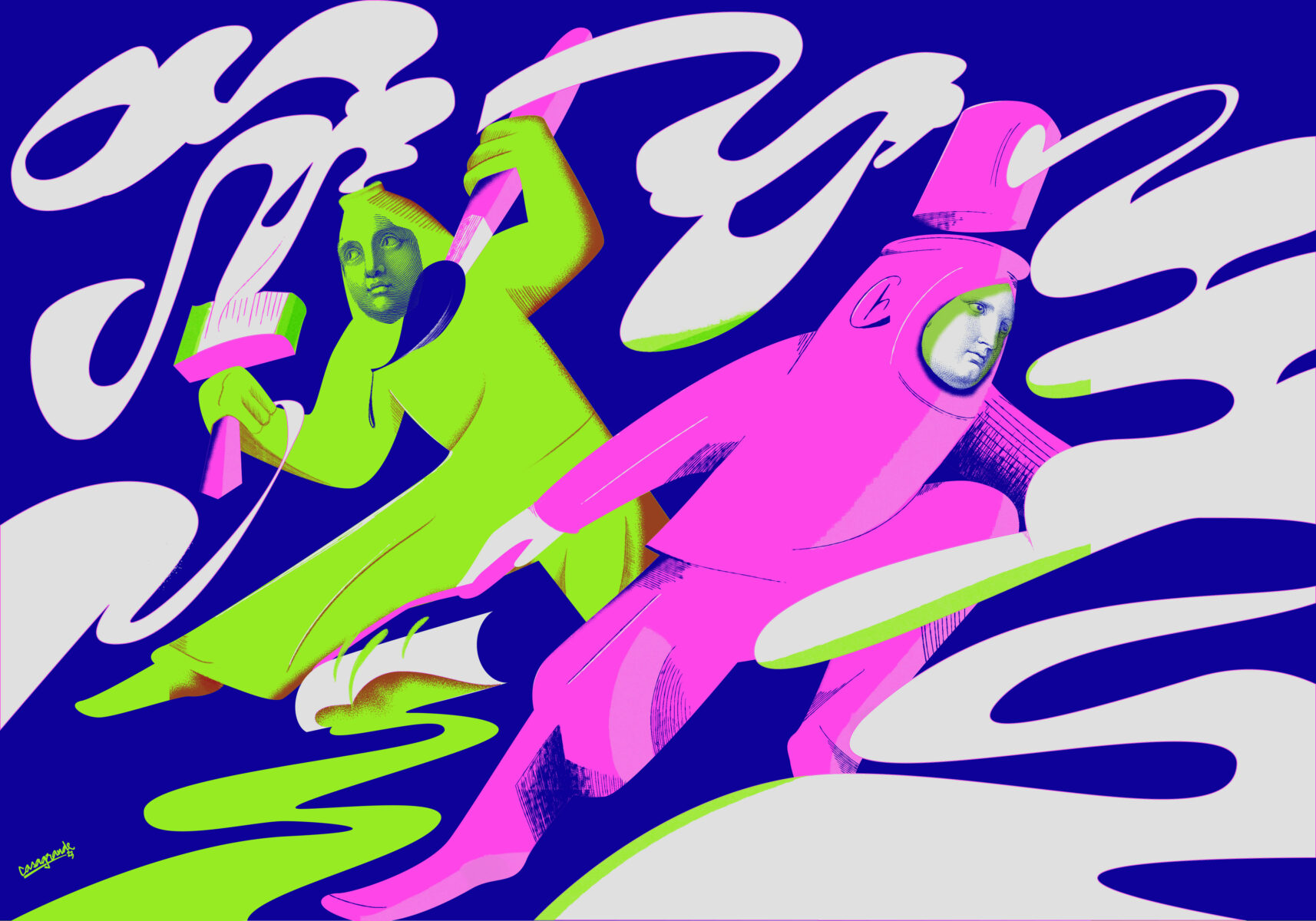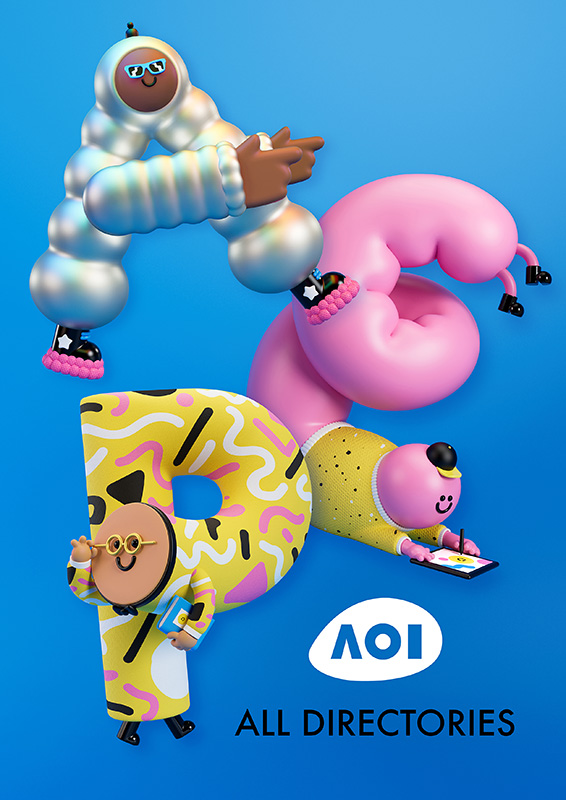In this resource we explain the area, what you’ll need in your folio, briefs, materials and process along with training and time management for artwork commissioned for a particular place.
In this article
What are the basics you need to know about site specific illustration? In this resource we explain the area, what you’ll need in your portfolio, briefs, materials and process along with training and time management for artwork commissioned for a particular place. This resource is an edited version of the full How To Get Into Site Specific Illustration publication available to AOI Members.
What is Site Specific illustration?
Site-specific illustration is artwork commissioned specifically for a particular place that conveys a defined message to its intended audience. That message can support a brand or community ethos. Additionally, it could enable well-being, provide accessible information, or provide a way-finding.
The final form an artwork takes should best suit its environment. Common examples are murals, but it could also be sculpture or signage. Site-specific illustration is typically pre-designed and then produced at a larger scale. For many illustrators these jobs allow them to apply their love of working with traditional media, at scale, in the real world.

What you need in your portfolio
Creating photo mock-ups with an existing illustration of yours is an effective way of showing the client how your artwork could look at scale and in a real-life context. But, ultimately, examples of completed site-specific projects are the best way to demonstrate that you can take a project from concept to high quality finish.
Focusing on mural painting, as an example, you could look to your own home or studio as a testing ground or put out feelers with friends, family or your place of work to see if they would like a mural. Keeping your artwork simple, thinking small and working at your own pace will help make these early projects manageable.
Detailing your process online helps clients understand what to expect when they commission you and gives them confidence that you know what you’re doing.
Having a look at award winning illustration in the site specific section will show you what is being commended in these areas.
Materials
Understanding what the correct materials are for each job is crucial. Both you and the client will want your artwork to look its best and stand the test of time. Gain this knowledge by assisting and learning from other professionals. Don’t be afraid to ask for advice (either online or in person) from those who have a deeper understanding of the materials and production method you intend to work in. Acquiring this know-how will ultimately save you time and provide the best results.
Process
Breaking your process down into stages is especially important when dealing with a real-world environment. Not only have you the design process to consider, but also the production and installation of your artwork along with all the necessary client and site liaison that comes with that.
As well as making sure you’ve understood the brief, you’ll need to do a site visit and ensure you’ve the appropriate training and insurances in place before you begin to breakdown the steps necessary to produce your artwork.
Build in time contingency, especially if the site is external and open to the elements.
Want to know more about window painting process and materials? Go here.
Training & Insurance
Connecting with and learning from existing professionals is a quick way to learn the skills and materials required to produce site-specific work. This will put you on their radar and could lead to them highlighting possible jobs, offering paid assistant work, or recommending you for commissions. You may discover that there is a local community of mural painters and if not, you could start one. Teaming up with others is a wonderful way of learning together and sharing resources.
Most jobs will require you to have Public Liability Insurance and some will require specific training, insurances or permits. The client will usually be able to specify what is required. Try and get this kind of paperwork and training sorted as early as possible so it doesn’t delay your creative production.
Clients
While the wide range of clients means there are potentially a high number of jobs available in this field, you’ll need to be aware that clients can come with a variety of approaches and varied levels of experience when commissioning site-specific illustration.
Private home-owners will typically have minimal experience in commissioning a project, so you may need to walk them through the process. There is greater opportunity here to put your own stamp on the artwork, producing a piece that is purely from your world, featuring themes personal to you.
Businesses commission site-specific work to enhance or sell their brand, either publicly or in-house. They may want to convey a set of values or brand identity. It’s worth asking for their brand guidelines and asking which are the most pertinent to the project in hand. Always ask if they intend or would like to have the option to use the artwork you’re designing in other ways. You may be able to licence your design for other usages and territories beyond the specific site it was originally commissioned for.
Publically-funded jobs are typically advertised through a local council’s media channels (newsletter, social media, website, LinkedIn) and often have a stated budget to work within. You’ll need to apply for these commissions, showing examples of previous work experience, along with your budget breakdown. The brief may require some kind of creative engagement with the community. Having experience here will often fast-track you to being considered.
Hospitals, museums, art galleries and other public-facing institutions also commission site-specific work.
Briefs
It’s critical to find out as much information as possible when taking on a new site-specific project, such as its purpose, site location and target audience.
You should visit the site itself. If this is not possible, then ask for footage (photos and video) of the site so you have a clear understanding of scale, condition, how accessible the site is and its surrounding environment.
Deadlines & Time Management
As your artwork will be placed in a real-world environment, timing is an important consideration. If the site is outdoors, factors like the weather and how that could affect production will need to be raised with the client.
Find out if anything else is happening on site and, if so, if the client has a schedule you need to be aware of. A building site, for example, will have a very specific order of works and your artwork should be installed when there’s the least likelihood of it getting damaged.
Fees, Licensing and Contracts
In order to calculate a fair fee and licence you should find out as much about the job as possible. Some clients may state their budget, but it’s more likely you’ll need to provide a quote.
As with any illustration job, you’ll need to state a fee (which should include an appropriate licence) for the artwork itself. You should also consider how long it will take to physically create the artwork – i.e. a labour/production charge and also any materials and other necessary costs.
As always, a contract should be in place between the client and illustrator. AOI members can use the Illustrator to Commissioner Agreement.
More
See more on Site Specific with our interview with Orit Bergman and Anat Warshavsky, winners of the WIA2023 Site Specific Category for their playful 3D exhibition installation.
AOI Members can explore the area of site specific Illustration in more depth in the How To Get Into Site Specific Illustration publication.
Go here to read the Publishing Season: Book Covers Basics
Go here to read the Site Specific Illustration Basics
Go here to read the Illustration for Children Basics
Go here to read the Branding Illustration Basics
Go here to read the Editorial Illustration Basics
AOI Members have access to all Inside Illustration content.
Members also have access to the AOI’s Pricing Calculator, which assists with quotes for Site Specific along with other areas of illustration commissioning.
To help find clients AOI produces annually updated Client Directories at a reasonable price, with contacts for advertising and design, publishing and editorial companies.
AOI speaks directly to the commissioners and passes on information about the kind of work they’re looking for.

